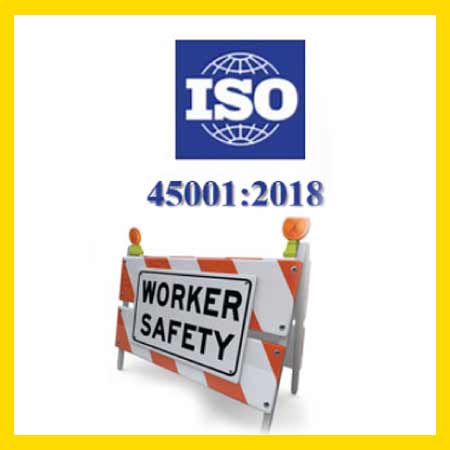Currency
November 24, 2019

ISO 45001 is the world’s first occupational health and safety international standard and is currently being developed to assist organisations to provide a safe and healthy workplace for your workers and other people, prevent deaths, work-related injury and ill-health as well as continually improving OHS performance.
ISO 45001 provides requirements for an effective occupational health and safety management system. ISO 45001 is one of the world’s most anticipated standards for occupational health and safety (OHS) systems. It is aligned with ISO 9001 (Quality Management), ISO 14001 (Environment Management and builds on OHSAS 18001, which is a framework aimed at controlling risks.
The system is designed to work with any organisation, a one size fits all approach. There has been considerable collaboration between more than 70 countries. The whitepaper by the BSI Group explains: “the framework identifies and controls health and safety risks, reduces potential accidents, aids legislative compliance and improves overall performance”. The standard also demonstrates how to develop and implement a policy with the right objectives for organisations of all types and sizes. More and more companies also want detailed information about their suppliers’ occupational health and safety practices to protect their brands.

According to the briefing note issued by the ISO, an organisation can proactively improve its OHS performance by following processes that use appropriate methods and tools:
Developing and implementing an OHS policy and OHS objectives
Establishing systematic processes that take into account its risks, opportunities and legal requirements
Determining the hazards associated with its activities; putting in controls and seeking to eliminate them
Establishing controls to manage its risks and legal requirements Increasing awareness of its OHS risks
Evaluating its OHS performance and seeking to improve it
Ensuring workers take an active role in OHS matters
In combination these measures will ensure that an organisation’s reputation as a safe place to work will be promoted, and can have more direct benefits, such as:
Improving its ability to respond to regulatory compliance issues
Reducing the overall costs of incidents
Reducing downtime and the costs of disruption to operations
Reducing the cost of insurance premiums
Reducing absenteeism and employee turnover rates
Recognition for having achieved an international benchmark, which may in turn influence customers
These new standards address specific concerns, including:
The proper way to develop a policy that fits all organisations regardless of size or culture.
Meeting the needs of companies that desire more information from suppliers.
Working with companies that meet specific safety standards helps brands maintain integrity with their clients.
Offering third-party certifications to assure a business is meeting standards.
Manageability for businesses of all sizes.
Allowing businesses in any industry to create benchmarks for their health and safety standards.
The standards described in the draft have taken in the best practice from other worldwide standards and simply developed a systematic approach to ensure all aspects are considered when directing operations in the workplace. It stresses the responsibilities of those in authority and acknowledges the necessity of everyone in the workplace to participate. The latest ISO 45001 working group meeting, which was held during the week of February 6, were able to provide an update on this new international standard for occupational health and safety.
A second draft international standard (DIS2) is expected to be published in April of this year; there will then be a four month period to allow for translations and a ballot to be held on the DIS2. DIS2 will be available for review free (clause by clause) on BSI’s online Draft Review system, or available for purchase (as the complete text) from BSI’s online shop.
The results of the ballot should be known by the end of July 2017, with the results of this being reviewed in September 2017. If DIS2 is approved and the final draft international standard (FDIS) stage is not required, publication of the new standard could be as early as November 2017. If an FDIS is required, however, the publication is more likely to be in Q2 2018. At this point it is likely that OHSAS 18001 will be withdrawn and organisations currently certified to OHSAS 18001 will have a three year period to migrate to ISO 45001.
In essence, ISO 45001 occupational health and safety will provide an insight into new elements, which will assist to support requirements for an effective OHS management system.
Find more information on:
Committee developing the standards and its work, ISO/PC 283
High Level Structure, view Annex SL of the ISO Directives
Content of the development version, please contact your National Member Body
ISO 45001 provides requirements for an effective occupational health and safety management system. ISO 45001 is one of the world’s most anticipated standards for occupational health and safety (OHS) systems. It is aligned with ISO 9001 (Quality Management), ISO 14001 (Environment Management and builds on OHSAS 18001, which is a framework aimed at controlling risks.
The system is designed to work with any organisation, a one size fits all approach. There has been considerable collaboration between more than 70 countries. The whitepaper by the BSI Group explains: “the framework identifies and controls health and safety risks, reduces potential accidents, aids legislative compliance and improves overall performance”. The standard also demonstrates how to develop and implement a policy with the right objectives for organisations of all types and sizes. More and more companies also want detailed information about their suppliers’ occupational health and safety practices to protect their brands.

According to the briefing note issued by the ISO, an organisation can proactively improve its OHS performance by following processes that use appropriate methods and tools:
In combination these measures will ensure that an organisation’s reputation as a safe place to work will be promoted, and can have more direct benefits, such as:
These new standards address specific concerns, including:
The standards described in the draft have taken in the best practice from other worldwide standards and simply developed a systematic approach to ensure all aspects are considered when directing operations in the workplace. It stresses the responsibilities of those in authority and acknowledges the necessity of everyone in the workplace to participate. The latest ISO 45001 working group meeting, which was held during the week of February 6, were able to provide an update on this new international standard for occupational health and safety.
A second draft international standard (DIS2) is expected to be published in April of this year; there will then be a four month period to allow for translations and a ballot to be held on the DIS2. DIS2 will be available for review free (clause by clause) on BSI’s online Draft Review system, or available for purchase (as the complete text) from BSI’s online shop.
The results of the ballot should be known by the end of July 2017, with the results of this being reviewed in September 2017. If DIS2 is approved and the final draft international standard (FDIS) stage is not required, publication of the new standard could be as early as November 2017. If an FDIS is required, however, the publication is more likely to be in Q2 2018. At this point it is likely that OHSAS 18001 will be withdrawn and organisations currently certified to OHSAS 18001 will have a three year period to migrate to ISO 45001.
In essence, ISO 45001 occupational health and safety will provide an insight into new elements, which will assist to support requirements for an effective OHS management system.
Find more information on:









